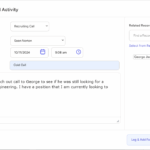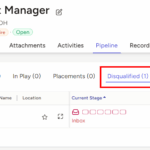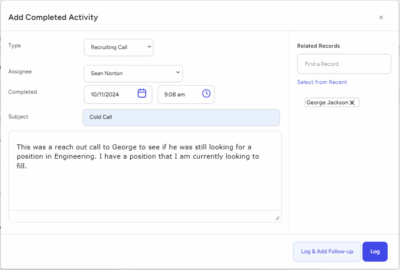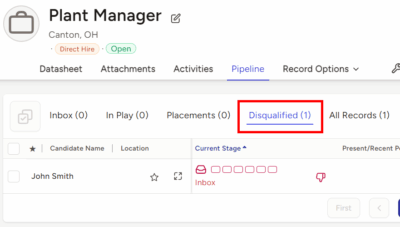Okay, you now have your MPC and your FAB presentation. Now it’s time for the “rubber to meet the road.” No more delays. IT’S TIME TO MARKET! And it’s time to meet the gatekeepers . . . with the “Triplicate-Triplicate” entrance to the gatekeeper call.
Every gatekeeper is eventually going to ask you the same three questions:
- “What’s your name” or “Who are you?”
- “What company are you with?”
- “What is the nature of your call?”
So, you might as well address this (using the first Triplicate) by answering these three questions before they are asked.
- “My name is Bob Marshall.”
- “I am with TBMG International in Atlanta, Georgia.”
- “And I am actually calling for three reasons.”
Now you go into your second Triplicate.
- “First, I am calling to introduce myself to the CEO.”
- “Second, I have something of a confidential nature to discuss with him/her.”
- “And finally, I have just recruited a top-notch candidate who …” (go into your FAB, if appropriate).”
At this point you can get your first objection from the gatekeeper who might say, “Oh, you are a recruiter. You need to talk to Tom in Personnel or Sally, our In-house Recruiter.”
You, say, “OK, I will. What is that extension? Now can you pass me through to the CEO, because, you see, I still want to introduce myself to him/her and I still have something of a confidential nature to discuss with him/her.” By the way, these confidential items can include the name of your MPC and, of course, your fee/guarantee agreement.
Don’t be surprised if this takes the gatekeeper by surprise. You will be the first recruiter who agrees with the objection, yet still asks to be put through to the person you were calling in the first place. This will be confusing to the gatekeeper. But after she collects herself, she just might put you through.
Even if you get voice mail, the key is to make sure that the CEO hears your voice when you record your message and makes the connection to what you do. You might not be successful on this call, but remember, you are going to call this CEO four times per year. Eventually you will get through.
The call
Bob: “Hello, is this John Hopkins? John, you are the CEO of IGT, aren’t you? Terrific! John, my name is Bob Marshall. I am a recruiter in the Atlanta area and I called you for a couple of reasons. First, I wanted to meet you over the phone, and second, by way of introduction, mention to you that I have just recently surfaced a top notch sales talent (Feature) who last year developed a brand new territory into one of the top 5 producing territories out of 200 in the country for his current company—one of your competitors—(Accomplishment) and there is no reason why he can’t bring that talent to bear with a new company like yours (Benefit). This candidate has been asked to relocate and wants to stay, if possible, in the Atlanta area, and so I am calling local companies to determine interest and also to introduce my recruiting service. John, if you would like to talk to my candidate, I have arranged for him to be available next Monday morning or Tuesday afternoon. Which one of those days would be good for you or would you like more information about him (Close)?” (60 seconds elapsed time)
John: “We have no openings.”
Bob: “Oh, I guess I didn’t make myself clear. I am a recruiter. I would venture a guess that 90% of the companies I place with don’t have openings when I call, but do want to be kept apprised of top-notch talent as that talent surfaces. One of the reasons for my call was to see if you wanted to provide yourself and your company with this unique service.” (20 seconds)
John: “Well that’s fine, Bob, but we just don’t have any openings.”
Bob: “OK, but let me ask you two more questions and then I will let you go. First, which companies do you suggest I call with this sales talent in mind (indirect marketing call)?” (10 seconds)
John: “Well, you could call Lift Engineering and Lion Manufacturing.”
Bob: “Great. And second, what kind of person would you like to hear about should I uncover that person in a subsequent search (this is the Lost Sale close—see below). Remember, I am a ‘contingency’ recruiter, so that means that it costs you nothing to look at my candidates. Only if you make them an offer and they accept and start to work does my service charge come into play.” (20 seconds)
John: “If you ever have a Director of Engineering, I would definitely want to talk with you.”
Bob: “OK John. It was a pleasure speaking with you!” (2 seconds)
John: “Thank you.”
The exit from the call
After you have utilized your Triplicate/Triplicate approach, and then made your FAB presentation with no effect, you now need a graceful and profitable exit from your marketing call. So, let’s say this call is going nowhere and you are ready to get out of this presentation and on to your next presentation. Before you leave this hiring manager, say this, “OK, I understand that you have no openings right now, but let me ask you one last question. What kind of person would you like to hear about should I uncover that person in a subsequent search?” We call this the “Lost Sale” approach. You are not selling anymore. You have given up. You are symbolically waving the White Flag. But, before you go, you are going to ask for information to help you sell this hiring manager on your next marketing call. Your next call can now be more precise, more targeted and more successful.
The goals of the call
I believe that the main goal of the marketing call is to engage the other side in conversation and to reach the magic 2-5 minute window where rapport building takes place. Less than 2 minutes and the call is not long enough for rapport building; over 5 minutes and you run the risk of not being able to call all of the companies you need to call in order to recycle 1500 per quarter. Don’t get me wrong – I like the idea of arranging a send-out for my MPC, but also want to start the rapport-building process, fashion optimum length conversations, avoid the “no openings” objection, and obtain alternate job orders and additional ‘client needs’ information I can utilize down the road.
So there you have it. There’s your effective marketing presentation. Do 25 of these per workday . . . doctor’s orders!
Now, let’s go write some job orders. But let’s make sure they are workable before we start recruiting on them.
— — —
Bob Marshall of TBMG International, founder of The Marshall Plan, has an extensive background in the recruiting industry as a recruiter, manager, vice president, president, consultant, and trainer. In 2015, Bob is celebrating his 35th year in the recruitment business. Marshall can be reached at bob@themarshallplan.org or at 770.898.5550. His website is www.themarshallplan.org.








